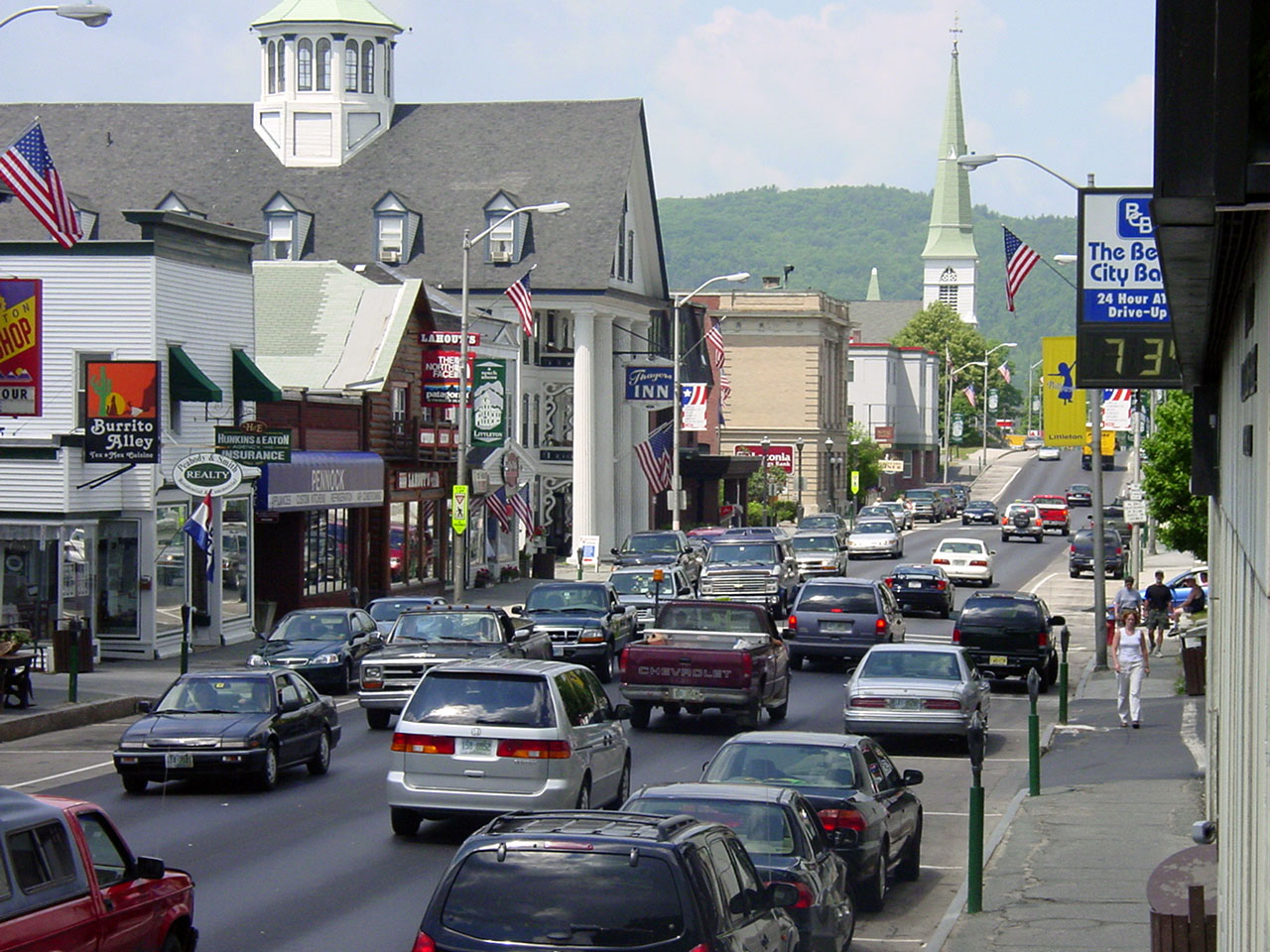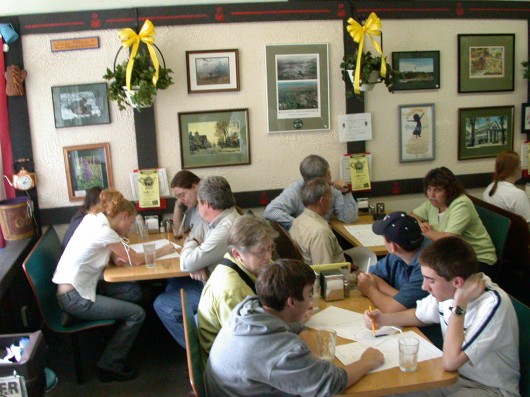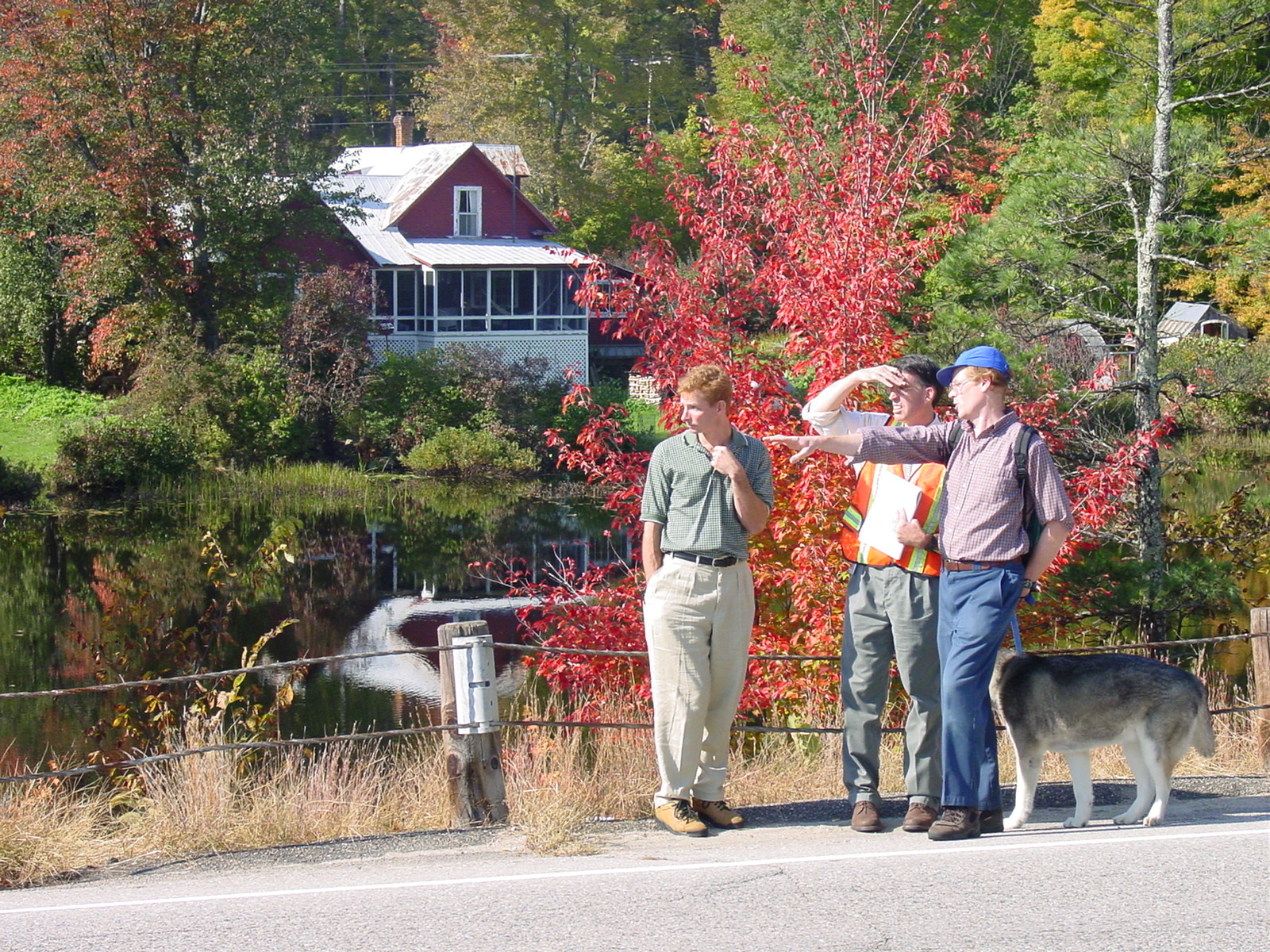A biweekly newsletter with public space news, resources, and opportunities.
A curated dispatch on all things public markets plus the latest announcements from the Market Cities Program.
By Benjamin Fried
For insight into what it means to plan transportation as place, look to New Hampshire. There, in a largely rural section of the state known as the North Country, transportation planning and Placemaking have converged to help local residents re-imagine main streets as walkable public spaces where social life and business can flourish. And that's just the beginning. The state Department of Transportation (NHDOT) recently embarked on a remarkable initiative to have ordinary citizens shape its strategic plan. This means the rest of New Hampshire is poised to join the renaissance underway on the streets of the North Country.
PPS came to New Hampshire in answer to a call from the town of Littleton, the economic hub of the North Country and home to about 6000 people. After decades of growth and pressure to expand, Littleton's downtown core remains surprisingly intact, with a genuine Main Street and a critical mass of civic buildings.

Littleton's historic Main Street is a potential asset that could be much better.
Despite these strengths, the town's successful qualities had eroded over the years. In some areas, the small-town sense of place has given way to wider streets, unsightly parking lots, and buildings that could look at home in any strip mall across America. Main Street's historic core is walkable for only a few blocks before it reverts to car-oriented development. Meanwhile, one of Littleton's great assets, the rushing Ammonoosuc River, is practically invisible as you pass through town.
When the town won a highly sought-after grant from the federal Transportation and Community and System Preservation Pilot Program (TCSP), they turned to PPS for guidance. The PPS team, in turn, sought out town residents to get a lay of the land. They met with everyone from prominent businesspeople, like the owners of the Jax Jr. movie theater and the Littleton Diner, to teachers and students from Littleton High School.

Littleton High School students and community leaders meet to formulate plans for improving the intersection of Main & Pleasant Streets.
Then they widened the circle further, talking with larger groups of citizens about what they envisioned for Littleton's future. Together, participants analyzed places along the whole length of Main Street, as well as locations by the river and on other downtown streets. They met in every conceivable venue--the opera house, the Coffee Pot diner, the community house, the senior center, the elementary school. Sometimes it seemed as though the entire town was involved.
"The fact that the community was engaged at a high level early in the game with a lot of conversation, I think was a very strong positive," said Ansel Sanborn, Administrator of NHDOT's Bureau of Planning.
Sometimes it seemed as though the entire town was involved.
The process opened up avenues of discussion that were previously unthinkable. Adults and young people, for example, shared their similar concerns about benches on Main Street. The town had removed most public seating years ago, fed up with a few teenagers who would perch on benches and antagonize passersby. As it turned out, most young people shared this apprehension about aggressive behavior in public spaces, but they also pointed out that scarce seating meant "there's only enough space for the bad kids to sit down." Giving young people a space of their own, rather than engineering them out of the picture, came to light as a mutually desirable solution.
As the initial stages of the Placemaking process neared completion, a vision emerged to significantly expand downtown Littleton's walkable core without constructing new buildings. By providing frequent crosswalks, wider sidewalks, better streetscape amenities, and more gathering places for people to stop and rest, the town sought to create a renewed sense of place in areas currently dominated by asphalt and cars. (Though parking remained a top concern, merchants agreed that the solution was to use existing parking resources more creatively and efficiently rather than add new spaces.)

Top: The Veterans' Memorial Bridge, which spans the Ammonoosuc River, as it would appear with PPS's recommendations.
To give people a sense of how the proposed changes would work, PPS collaborated with engineers from the state transportation department, NHDOT, to install inexpensive traffic calming experiments around town. One experiment simulated the effect of a traffic median, for instance; another approximated wider sidewalks and bump-outs. Before and after the experiments were installed, volunteers from the town measured traffic speeds to gauge the traffic calming plan's impact. Construction of PPS' long-term traffic-calming recommendations is slated to begin in 2006.
Thanks to a provision in the TCSP grant, PPS's work in Littleton spun off to several other North Country towns. Representatives from throughout the region observed the workshops in Littleton, then returned to their hometowns to start their own initiatives with PPS and NHDOT. In small villages like Chocorua and Meredith, whose main streets were driven to the brink of extinction by excessively fast traffic, these projects signaled a welcome reversal in the relationship between the town and NHDOT.

An engineer from NHDOT talks with residents of Chocorua about their local streets.
"There was a general desire to leave behind what was viewed as a turbulent past of DOT-Town miscommunication and begin a new era of collaboration and cooperation," said one participant in Meredith. A Chocorua resident echoed that sentiment after the installation of a traffic-calming experiment on the town's main street: "We are excited by this concrete beginning... We never thought working with DOT could be so great!"
Soon many more New Hampshire residents will get to experience the satisfaction of shaping their own streets, because this new way of doing transportation planning is going statewide. NHDOT has convened an advisory committee consisting of PPS, the New Hampshire Charitable Foundation, the Conservation Law Foundation, and Easter Seals (a non-profit that provides services for people with disabilities) to help develop a citizen-based, community-driven Long Range Transportation Business Plan.
These partnerships underscore just how far some state transportation agencies have evolved since the "design and defend" days.
"The committee is working to challenge us at the DOT to think about things differently," said Sanborn. "Our default value is talking about things like Level of Service and ride quality and stuff like that, and people are saying that those are probably very important for you when you're doing your business, but they don't mean much to us. Can you translate this into our terms? Can we come to an agreement about what's really important?"
PPS and consultant Tom Warne have also been retained to conduct a comprehensive training program with NHDOT in Context Sensitive Solutions--an approach to transportation planning that meets community needs--along with their consultants and several client communities.
These extraordinary partnerships underscore just how far some state transportation agencies have evolved since the "design and defend" days, when seemingly every road project bred more antagonism than the previous one. Now cooperation is common, and Placemaking will soon be a core strategy of transportation planning in New Hampshire. NHDOT is putting transportation planning in the hands of its "customers" -- embracing the communities it is meant to serve and setting a precedent for other states to follow.
New hope for countering sprawl in the heart of the Sun Belt.
Just like in the small towns of New England, the key to bringing life back to sprawling Sun Belt cities is rethinking transportation issues through the lens of place. The necessity of this strategy was on vivid display during PPS's recent work in Tucson, a booming city of 500,000 and the economic hub of southern Arizona.
Tucson's rapid growth has been concentrated on its edges or outlying Pima County, leaving the city center behind. To bring more economic activity and street life to downtown, Tucson officials recently hired PPS as part of a multi-disciplinary team to develop a revitalization strategy for the Congress Street corridor, a network of streets ripe for rebirth.
In its heyday, Congress Street was the heart and soul of downtown--the place to go for family shopping trips or a night out. But Congress Street's remarkable variety of shops, theaters, and music venues have been in decline since a fire destroyed one of its major retail anchors in the mid-1960s. Over time the street has lost more and more retail establishments--with their awnings, historic signs (some neon), and human touch--that together made it a rich experience. While a core of civic buildings and pedestrian-friendly infrastructure remains, individual destinations are separated by empty stretches that feel neglected, or even dangerous.
Participants in PPS's Placemaking workshops identified nine key places along Congress Street--such as Veinte de Agosto Park, the Ronstadt Transit Center, and the historic Fox Theater--that could be linked together by a cohesive pedestrian-friendly environment. They re-imagined Congress Street as the central corridor in a network of walkable streets and alleys, and hit the streets to determine how each place could serve as a focal point of activity for the improved streetscape. Recommendations included adding mixed-use development, making existing parks more welcoming, and identifying opportunities to hold special events (including a mercado at the transit center).
The goal is to establish Congress Street in the minds of Tucson residents as more than a traffic artery--it could be viewed as a prime destination. When the streets downtown are places worth going to once again, Tucson will have recovered its heart and soul.
For more information on PPS's Transportation Program, email Andy Wiley-Schwartz or Shin-pei Tsay, or call (212) 620 5660.
The rich text element allows you to create and format headings, paragraphs, blockquotes, images, and video all in one place instead of having to add and format them individually. Just double-click and easily create content.
The rich text element allows you to create and format headings, paragraphs, blockquotes, images, and video all in one place instead of having to add and format them individually. Just double-click and easily create content.
Body Text Body Link
The rich text element allows you to create and format headings, paragraphs, blockquotes, images, and video all in one place instead of having to add and format them individually. Just double-click and easily create content.
Here is some highlighted text from the article.




Headings, paragraphs, blockquotes, figures, images, and figure captions can all be styled after a class is added to the rich text element using the "When inside of" nested selector system.
Headings, paragraphs, blockquotes, figures, images, and figure captions can all be styled after a class is added to the rich text element using the "When inside of" nested selector system.
Headings, paragraphs, blockquotes, figures, images, and figure captions can all be styled after a class is added to the rich text element using the "When inside of" nested selector system.

We are committed to access to quality content that advances the placemaking cause—and your support makes that possible. If this article informed, inspired, or helped you, please consider making a quick donation. Every contribution helps!
Project for Public Spaces is a 501(c)(3) tax-exempt organization and your donation is tax-deductible within the guidelines of U.S. law.